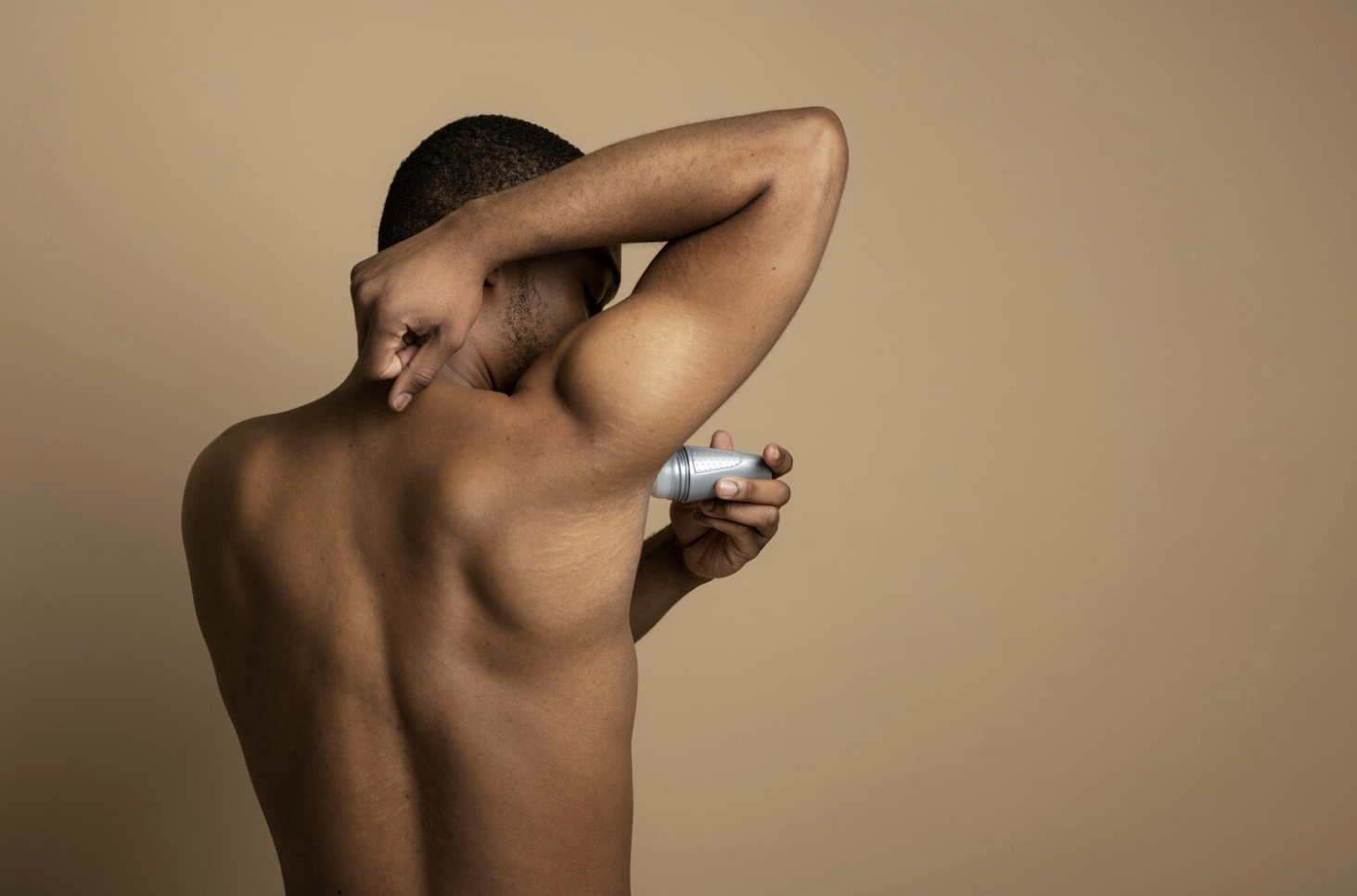 A man using a deodorant. In Kenya, the Kenya Bureau of Standards (KEBS) outlines all requirements for manufacturing non-medicinal cosmetic products.
A man using a deodorant. In Kenya, the Kenya Bureau of Standards (KEBS) outlines all requirements for manufacturing non-medicinal cosmetic products.
A good scent can have a calming effect. A quick spray of perfume can instantly lift your spirits. A touch of lipstick can change the tone of your entire day. A softly flickering candle can soothe the senses after long hours of stress. These rituals have become common over the years and are more than cosmetic and they are emotional, cultural, and deeply personal.
Smells play a significant role in human behaviour. The earliest known use of perfume can be traced to ancient Egypt, where plant-based aromatic herbs, gums, and resins played a role in spiritual rituals. Did you know that one of the highly prized ancient essential oils, called frankincense, is also found in Kenya? Now you know!
Today, fragrances are incorporated into a wide range of everyday products, such as deodorants, laundry detergents, cleansers, shampoos, and conditioners, among others. In the modern pursuit of self-care and beauty, millions of women turn to fragrances, makeup, and scented candles to feel good, boost confidence, and create moments of calm.
Natural perfumes fall into two main categories: aromatic compounds and musks, both derived from sources like plants, lichens, seaweed, and oils extracted from various parts of plants. Essential oils are very costly, and their extraction and production are a daunting task and time-consuming. In contrast, synthetic aromatic compounds are commonly used as substitutes because they are cheaper to produce and help overcome challenges like limited natural resources or inconsistent product quality.
But beneath the comforting glow and alluring aromas lies a disturbing paradox: many of these everyday products have been found to contain phthalates and parabens, chemical compounds that have been linked to endocrine disruptors and prostate and breast cancer. These substances can bind to sex hormone receptors, such as estrogen (ER) and progesterone (PR) receptors, and interfere with their normal function by competing with natural hormones.
Fragrance is mainly used as a scent to add or mask the odour of ingredients and has a long-term effect. Despite increasing awareness, most consumers are unaware of their presence. Why? Because these compounds often hide under vague labels like “fragrance” or “parfum” a legally protected term that can include hundreds of undisclosed ingredients.
Lower molecular weight phthalates such as diethyl phthalate (DEP) and dimethyl phthalate (DMP)and parabens are commonly used as solvents and odourless diluents in cosmetic products like deodorants and perfumes. Higher levels of monobutyl phthalate (MBP), monoethyl phthalate (MEP), and mono-2-ethylhexyl phthalate (MEHP) in women’s urine was found to be more than men which suggests more exposure to dibutyl phthalate (DBP), diethyl phthalate (DEP), and di- (2-ethylhexyl) phthalate (DEHP) due to the use of perfumes and colognes.
Among several factors studied, parabens, phthalates, nitro parabens, phthalates, and nitro musks were identified as the main causes of breast cancer. Parabens samples that have been found as present in 99% of human breast tissue samples possess estrogenic activity and can stimulate sustained proliferation of human breast cancer cells at concentrations measurable in the breast.
Scientific studies have shown that 4 types of phthalates were identified as being significantly associated with an elevated risk of breast cancer. Additionally, Studies show that parabens can mimic estrogen, potentially stimulating breast cancer cell growth. Studies done on breast cancer cell lines (MCF-7, T-47-D, ZR-75-1) have shown that parabens can increase cell migration and invasiveness, yet this is one of the main components in shampoos.
Breast cancer is the leading cancer worldwide, and among Kenyan women, accounting for around 23–34 cases per 100,000 women. Annually, roughly 6,800 new cases result in about 3,100 deaths, a striking mortality rate of nearly 45%. Early scientific research in vitro studies found that phthalate esters can attach to estrogen receptors, activate estrogen-related genes, and promote the growth of cells that respond to estrogen, hence can potentially cause cancer. Another scientific study found four phthalates in 102 hair sprays, perfumes, fragrances, and nail polishes, DBP in 19 of 21 nail polishes and 11 of 42 perfumes, as well as DEP in 24 of 42 perfumes and 2 of 8 aromatic substances were observed. This is indeed alarming.
In Kenya, the Kenya Bureau of Standards (KEBS) outlines all requirements for manufacturing non-medicinal cosmetic products in Standard KS 2937:2021. These standard addresses compliance with Good Manufacturing Practices (GMPs), raw material sourcing, product formulation, and the entire production process for branded cosmetics. However, in most countries, including Kenya, companies protect their proprietary blends, but it can also mean consumers are unaware of the specific chemicals they are exposed to, as it is only labelled “ parfum.”
A study review of Kenya’s cosmetic industry from 2018 to 2023 identified weaknesses in regulatory enforcement. Key issues included inaccurate labelling, use of low-quality ingredients, presence of counterfeit products, and insufficient testing infrastructure, especially among small-scale or cottage industry producers.
Raising consumer awareness about the harmful effects of perfumes and colognes, along with developing products using safer, low-risk ingredients, can help safeguard public health. Given the significant role aromatic products may play in the development of breast cancer, reformulating these products or choosing to stop using them altogether can be effective preventive measures. Moreover, consumers can resort to using essential oils and organic products, which are costly but safer alternatives.
The paradox lies in how we pursue beauty and comfort through products that may, silently and invisibly, harm us. The answer is not fear, but it is education, transparency, and reform.
The writer is a policy
Researcher











